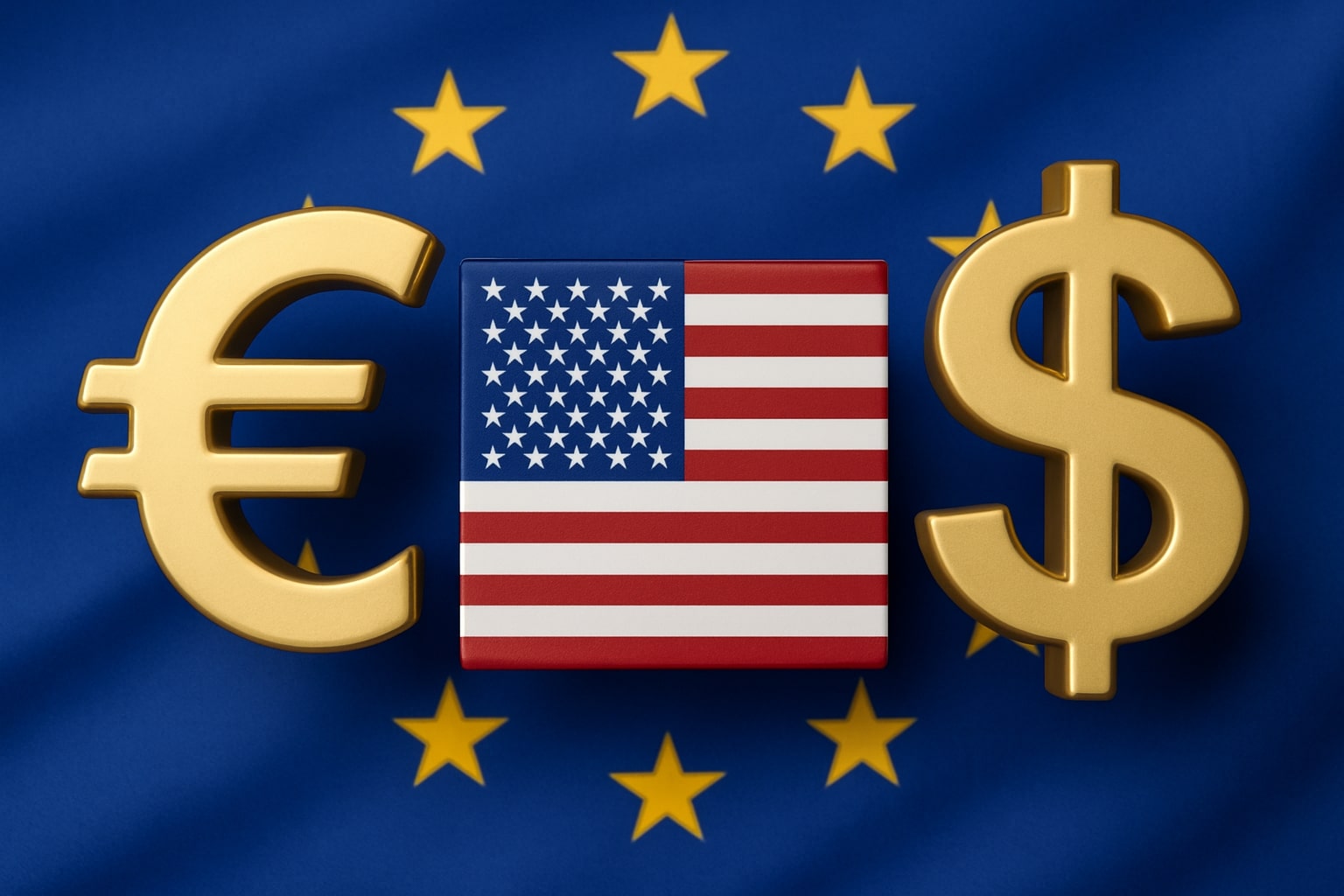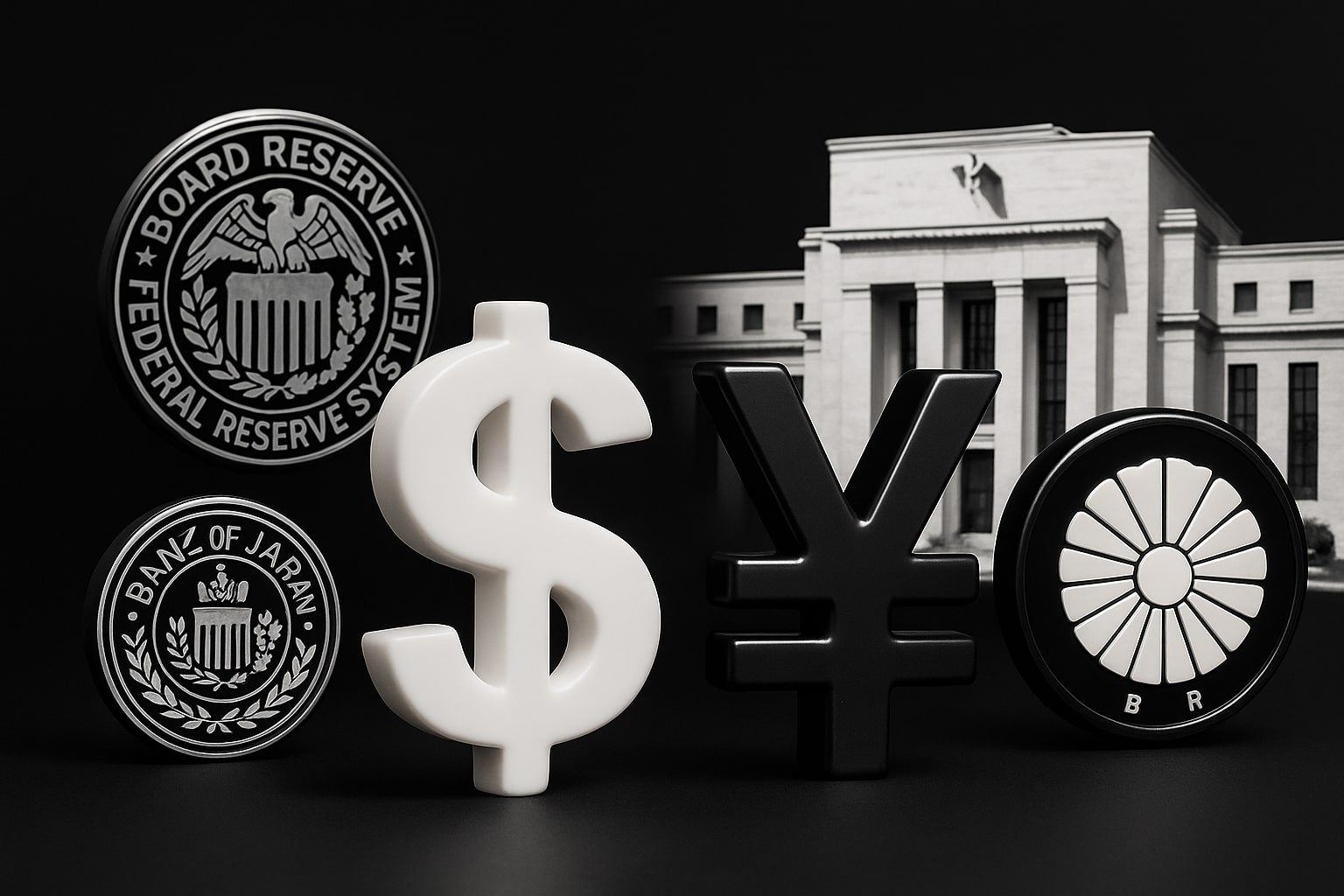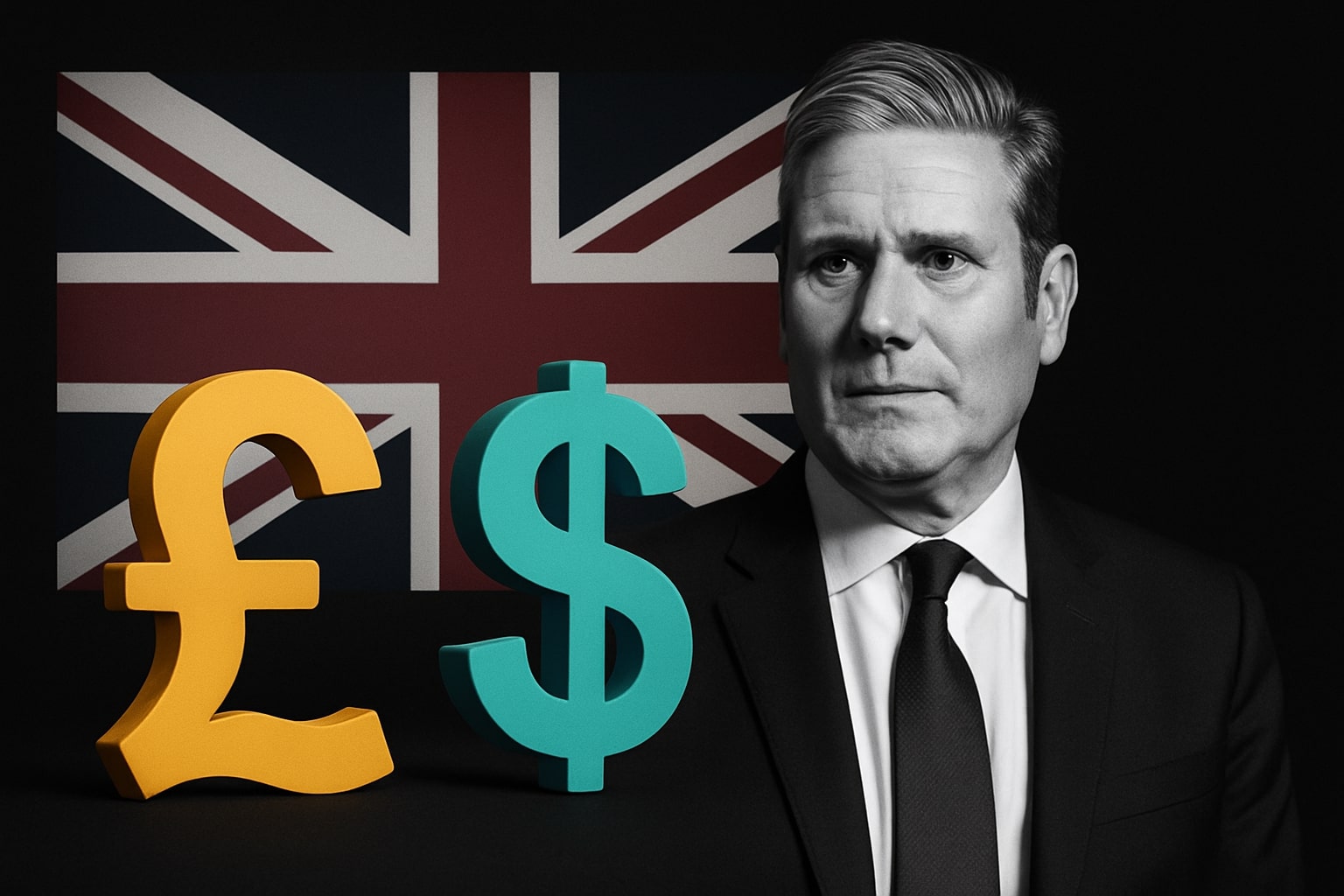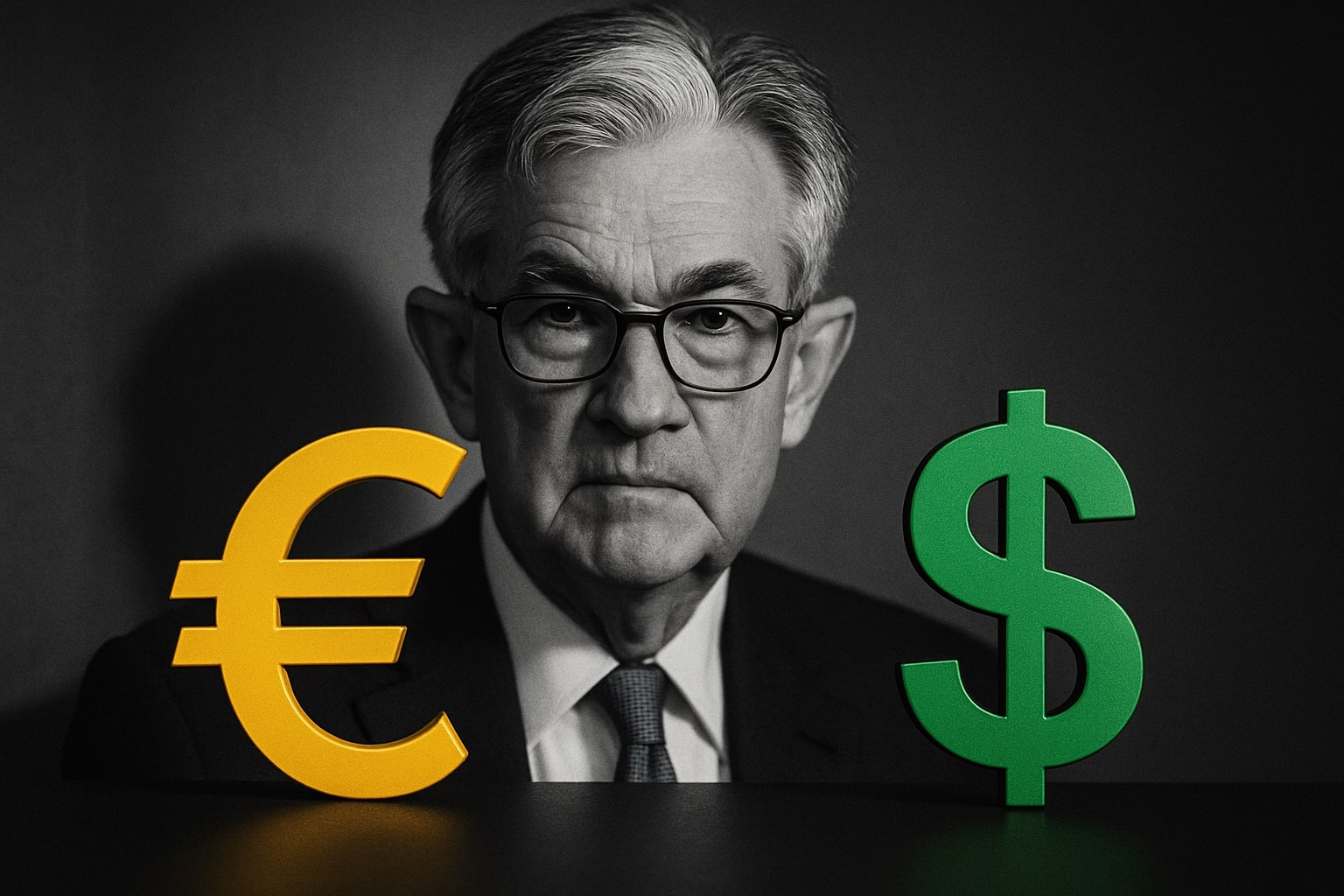
EUR/USD Tests 1.1340 — Will Fed Cuts or ECB Action Drive the Breakout?
Euro clings to 1.1340 with Fed rate bets rising and ECB easing in focus Is a breakout to 1.1400 next—or will the dollar strike back first? | That's TradingNEWS
EUR/USD Hovers Near 1.1340 as Markets Digest Tariffs, PCE Data, and ECB Uncertainty
The euro-dollar pair is locked in a tense range, trading around 1.1340 as the market navigates a matrix of conflicting signals. After briefly spiking higher following a temporary collapse in U.S. dollar strength, EUR/USD has lost momentum, caught between soft macroeconomic data out of the U.S., dovish tones from the ECB, and renewed geopolitical pressure stemming from Trump’s revived tariff strategy. Despite a recovery from the 1.1200 zone earlier this week, upward traction has faded ahead of two critical risk events: the U.S. PCE inflation report and the upcoming European Central Bank policy meeting.
U.S. Dollar Finds Temporary Support as Traders Reassess Fiscal Risk and Labor Weakness
The U.S. Dollar Index reclaimed ground, edging up to 99.48, stabilizing after its sharp midweek reversal. The move came as markets absorbed a hawkish reversal in Trump-era trade policies. A federal appeals court reinstated previously blocked tariffs, introducing a layer of global trade uncertainty that momentarily boosted safe-haven demand for the greenback. But the dollar's recovery has been tentative. Jobless claims for the week ending May 24 spiked to 240,000, well above the 230,000 estimate, while continuing claims hit 1.919 million. Those labor signals, paired with a weak Q1 GDP print and growing concern over the ballooning U.S. deficit tied to Trump’s tax-cutting proposal, have capped USD strength. Despite modest dollar inflows, market participants are now pricing in nearly 49 basis points of Fed rate cuts before year-end, keeping EUR/USD supported near the top of its range.
Euro Sentiment Stalled by Weak German Data, ECB Ambiguity, and Panetta’s Caution
The euro’s climb is also running into headwinds of its own. German retail sales, though positive on an annual basis, failed to reassure investors about the broader health of Europe’s largest economy. Inflation in Germany remains muted, printing at 0.1%, in line with expectations but far below what’s needed to pressure the ECB away from its anticipated easing path. ECB board member Fabio Panetta confirmed that a June rate cut to 2.0% is likely, but stressed future reductions would depend on evolving macro conditions, particularly regarding U.S.-EU trade dynamics and persistent Eurozone stagnation. The European currency is managing to hold its ground partially due to Trump’s decision to delay new tariffs on EU goods, which eased immediate fears of retaliatory disruption.
EUR/USD Pressured as Buyers Struggle to Break Above 1.1347 Resistance Zone
From a technical perspective, EUR/USD is showing signs of exhaustion just beneath 1.1347, where a descending trendline and the 0.236 Fibonacci retracement from recent highs converge. Multiple rejection wicks around this level suggest buyer fatigue. The pair remains above its 50-EMA at 1.1330 and 200-EMA at 1.1314, signaling structural support, but upside potential is capped unless bulls can sustain a daily close above the 1.1365–1.1400 zone. If that level is broken, further resistance lies at 1.1450, followed by 1.1500.
On the downside, initial support is clearly established at 1.1300, with stronger demand expected near 1.1250. If the upcoming PCE data disappoints, traders may look to fade EUR/USD back toward that 1.1250 mark. Technical oscillators remain neutral. The RSI sits near 50, indicating a lack of trend conviction, while MACD shows flattening momentum.
Core PCE Data Delivers No Shock But Could Still Shift Rate Cut Expectations
The Core PCE Price Index rose 0.1% month-on-month, matching estimates and cooling slightly from March’s 0.2% increase. The year-on-year reading of 2.5% is within the Fed’s expectations, reinforcing the narrative of gradual disinflation. However, despite meeting forecasts, the data may still push the Fed closer to action if subsequent prints confirm a steady deceleration. Markets appear reluctant to front-run the central bank, but the dovish tone from key Fed officials including Mary Daly and Austan Goolsbee indicates a bias toward easing if data cooperates.
For EUR/USD, the inflation figures add complexity. While a soft PCE supports euro strength through dollar weakness, the pair has not convincingly capitalized, suggesting investors remain cautious ahead of next week’s ECB decision and any surprises in U.S. labor market or wage growth trends.
Fiscal Backdrop in the U.S. Adds Pressure as “Sell America” Trade Builds Momentum
Beyond economic prints, structural issues in the U.S. are also weighing on sentiment. Trump’s tax-slashing proposal is expected to expand the deficit by multiple trillions, at a time when debt-to-GDP is already near historic highs. Combined with a deteriorating labor market and renewed tariff risk, these concerns have fueled the “Sell America” narrative in currency markets, supporting non-dollar assets like the euro. However, the dollar remains far from a full breakdown, as short-covering and risk hedging still drive periodic inflows into USD positions.
The euro remains vulnerable to risk reversals. If Trump reengages with EU tariffs or the ECB’s tone is more dovish than markets expect next Thursday, EUR/USD could quickly unwind recent gains. A sustained move below 1.1289 would reintroduce downside momentum toward 1.1250 and potentially 1.1200.
Verdict: Hold With Bullish Bias Toward 1.1400 Pending ECB Clarity
EUR/USD is sitting at a critical technical junction. While the macro backdrop favors euro appreciation in the short term due to soft U.S. data, renewed tariff uncertainty, and growing Fed dovishness, the failure to break above 1.1347 raises caution. Bulls need a confirmed breakout above 1.1365 to unlock the next leg higher. Until then, EUR/USD remains a Hold with a bullish tilt, contingent on PCE follow-through and ECB confirmation.
A daily close above 1.1400 would validate a move toward 1.1450–1.1500. A drop below 1.1289 shifts momentum back to sellers, targeting 1.1250. Stay focused on U.S. consumer and wage data for the next macro catalyst and watch ECB commentary for surprises that could reset the path entirely.
That's TradingNEWS
Read More
-
Vanguard S&P 500 ETF (VOO) Stays Above $600 as Buybacks, Growth, and Rate Cuts Power U.S. Rally
16.10.2025 · TradingNEWS ArchiveStocks
-
XRP ETFs Surge With $1.9B Inflows to XRPI, XRPR, and XRPL XRP-USD Slides to $2.33
16.10.2025 · TradingNEWS ArchiveCrypto
-
Natural Gas Drops Below $3.00 as Record Output and Warm Weather Pressure Prices
16.10.2025 · TradingNEWS ArchiveCommodities
-
USD/JPY Price Forecast - USDJPY=X Drops Below 151.10 as Overbought Dollar Faces Pressure from Weak Momentum and Rising Geopolitical Tension
16.10.2025 · TradingNEWS ArchiveForex



















